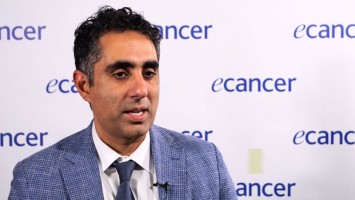Hereditary Breast and Ovarian Cancers Meeting 2011, New York, USA
History and highlights of HBOC; understanding the genome and raising awareness
Professor Franco Muggia – New York University Medical Center, USA
The title of the conference is Hereditary Breast and Ovarian Cancer – Lessening the Burden and it is truly multidisciplinary and also international. It’s a collaboration, actually it’s an outgrowth of conferences that we held here with our partners in southern California; we were doing studies in hereditary breast and ovarian cancer, in the earlier part of this decade we had four conferences on that sponsored by a foundation and similarly in Bari, Italy, in the Puglia region, Dr Paradiso held an international conference, mainly European conference. And he attended one of our conferences and we decided to join forces so this is the second joint conference, the first one was held in Bari in 2009, it was extremely effective in bringing together both European and American collaborators in this area. And it’s truly multidisciplinary, it has basic genetics, basic molecular biology, it has epidemiology, it has clinicians interested in therapeutics and it has people interested in the psychosocial implications of genetic testing and interventions, both in screening and prevention. So this is an outgrowth of conferences that we held in screening and prevention; initially we called them screening and prevention and now it’s gotten very heavily into the genetics.
The highlights are that, no surprise, we’re learning a lot about the genetic makeup of people with both breast and ovarian cancer and especially the linkage to hereditary components. So the hereditary breast cancers and hereditary ovarian cancers have been the beginning in the unravelling of a lot of molecular biology that may be applicable for all of the cancers for the ones we call sporadic. And so the molecular biology is increasing in leaps and bounds. For example, today we heard from Douglas Levine from the Institution uptown who has been part of the Genome Atlas programme and they’ve looked at genome arrays of the specimens from ovarian cancers prior to treatment, they have an analysis of about 400; they started off with 500+ and ended up with 488 samples. All the gene array information and gene amplifications, gene deletions, everything is available to investigators now online, very quickly demonstrated how that was. So we’re learning a lot about the genetics of these cancers.
So that’s one aspect, the other highlight, of course, relates to our ability to understand, first of all, why these cancers are susceptible to DNA damaging agents. We’ve known since 1979, when I was at the National Cancer Institute, cisplatin got approved for the treatment of testicular cancer and ovarian cancer. So ovarian cancer was the major target of this drug called cisplatin which represents the platinum compounds which are extremely effective in wiping out most of the disease when it’s diagnosed. I think we know now why that is: it’s because a lot of the ovarian cancers, the majority, are homologous recombination deficient. Now that’s the word that’s being used now – homologous recombination deficient – that represents the target for PARP inhibitors. Why? We just got Hilary Calvert just to explain to us why that is. It’s the concept of synthetic lethality, if you block the other repair pathway the cells are extremely sensitive to that blockade of the other. So the molecular biology is driving a lot of these things, the implications to therapeutics but now, tomorrow, we’re going to devote ourselves a bit to discuss the future, including prevention.
What can be done to raise awareness of hereditary issues?
I think that is happening throughout, people understand, especially people that are diagnosed with ovarian cancer. Unfortunately most of them are diagnosed at late stages. Ovarian cancers, like breast cancers, come with different makeups but two-thirds of the ovarian cancers are what we call high-grade serous, they have certain molecular signatures which are indicative of that particular makeup. We’re starting to understand where they start, well a lot of them don’t start in the ovary, that’s why it’s been very hard to find them early, they start in the fimbriae of the fallopian tubes and this whole morning we have had a bit of discussion about how people are investigating the developments of how premalignant lesions develop in the fimbriae. Investigators at the Dana Faber are looking into that quite in depth, what the events are that lead to that. There is a heightened awareness of the fact that, in ovarian cancer, first of all there is a low curability rate in these high-grade serous but they know that now if you… The patients themselves and, of course, the physicians know that there is a relationship between the BRCA function or dysfunction, lack of function and platinum sensitivity. So they know right from the beginning that it’s probably better to do the testing. So the patients are exposed to the concept of genetic testing and they know that there are a number of therapeutic options that arise from that. So there is a heightened awareness of it throughout. Of course you want to get to the prevention stage, that becomes a bit more difficult. You probably need to run these trials as very expensive so the concepts are there, I don’t think the money is there right now to do the trials.








